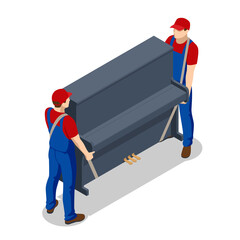Best Laser Hair Removal Langley uses light pulses to destroy the hair follicle, stopping future growth. The technology has been around for years and is one of the most trusted hair removal options.
Most people who choose this hair removal method see permanent results that last much longer than waxing and shaving. They also find that when hair does grow back, it is usually thinner and lighter in color.
When compared to waxing and other hair removal methods, laser treatments are much less painful. Laser hair removal involves exposing the skin to beams of highly concentrated light, which target pigments in your hair, and destroys them without damaging the surrounding tissue. This process can feel like a warm pinprick or a light rubber band snapping against your skin, but most people find it to be far less painful than other hair removal methods. The tingling sensations typically last for just a few moments, and they tend to lessen as you get more treatments done.
Depending on your pain tolerance and where you are having the treatment, some people are able to have laser hair removal done without the use of any anesthetic. However, for more sensitive areas such as the bikini line and underarms, many patients prefer to have a topical anesthetic applied before their appointment. This is entirely optional and usually doesn’t last long, but it can make the procedure significantly more comfortable for most.
Before your laser hair removal treatment, you will be asked to shave the area you are having treated. This is because even though the hair doesn’t need to be present for the laser to work, shaving the area beforehand helps ensure that every single hair is targeted by the laser beam. It also minimizes the risk of side effects, such as razor bumps or ingrown hairs, which can occur after plucking or waxing.
Once you are in the chair for your treatment, your technician will cover the area with a protective gel and then activate the laser, which will send out pulses of light into the hair follicles. This may cause a slight stinging or burning sensation, but this is extremely minimal. Depending on your comfort levels, you can take a few deep breaths or relax with music to help ease any discomfort.
As a note of caution, it is important to only have laser hair removal done by a licensed practitioner. This means that they should be board-certified in an aesthetic specialty such as dermatology or plastic surgery, and they should have specific laser certification (many states don’t require licensing of laser specialists). If you decide to go with a non-specialist clinic, make sure you ask about their qualifications and experience.
Less Ingrown Hairs
Laser hair removal is one of the only ways to eliminate ingrown hairs for good. These painful bumps form when hair that should be growing out from underneath the skin’s surface curls back and grows inside the top layer of the skin instead. Eventually, this can cause the hair to get stuck under the skin and continue growing while trapped, causing the hair to become thicker and sharper over time.
If left untreated, ingrown hairs can lead to pilonidal cysts, which are painful pockets filled with dead skin cells and hair that need to be surgically removed or drained. Ingrown hairs also tend to be more common in areas with thicker, coarser hair, like the neck, chest and back of the head for men, or the legs and bikini area for women.
During laser hair removal, your specialist will use a handheld device with a small laser beam to target individual hair follicles directly. This destroys the follicle and prevents it from producing any new hair. The number of treatment sessions you require to achieve permanent results will vary from person to person, so it’s important to talk to your laser hair removal specialist before deciding on a plan.
Some people worry about the pain associated with laser hair removal, but it’s much less painful than you might think. In fact, many people compare it to the feeling of a rubber band snapping against the skin or a sunburn-like sting. The discomfort can last for a few minutes, but it’s a small price to pay to achieve smoother, hair-free skin.
Once you get the hang of it, laser hair removal can be an extremely fast process. You can easily be in and out of your appointment within a few minutes, depending on the size of the area being treated.
The best part about laser hair removal is that it doesn’t just save you the headache of dealing with ingrown hairs, but it also saves you money in the long run by reducing your need for shaving products and salon waxing appointments. In addition, you’ll likely spend less on a home laser hair removal system over the years, and the initial investment will be paid off in no time when you realize how much you save each month on shaving cream, razors and salon waxes.
Less Time & Effort
Compared to shaving and waxing, laser hair removal is far less time-consuming. It is a fast, simple process that results in lasting, beautiful skin. The best part is that it also saves you the cost and hassle of purchasing shaving cream and razors, paying for waxing appointments, and the potential for painful ingrown hairs from manual methods.
The key to successful laser hair removal is patience. It is normal to see a little hair regrowth after a series of sessions, but this is due to the fact that the laser is only able to destroy hairs that are in the anagen phase. As the treatments continue, your hair will grow back slower and thinner.
For the most accurate and effective treatment, it is essential that you avoid tanning or using sunless skin lighteners for a month before each session. This is because the laser works by targeting pigment, or melanin. This means that if the melanin is present, the laser cannot target the hair follicle, and the treatment will be less effective. In addition, it is important to shave or trim the area that will be treated before your appointment. This will allow the laser to target the shortest hairs possible, and thus ensure the most effective results.
Less Expense
If you’ve been relying on shaving and waxing to remove unwanted hair, it can add up over time. Although laser hair removal can be more expensive than traditional methods at first, it typically costs less over time due to the reduced need for future sessions.
As a bonus, you will save money on razors and waxing products over time as well. The cost of laser hair removal depends on the area being treated, as well as your geographic region and the number of treatment sessions needed. While at-home laser hair removal devices are available, dermatologists recommend avoiding them for those with darker skin or light hair colors, as the device may not be able to detect contrast between the color of your hair and skin and can cause hyperpigmentation or scarring.
The cost of in-office laser hair removal is comparable to other popular treatments like microdermabrasion and chemical peels. During the consultation, you will undergo a quick and easy process where a laser specialist will determine whether or not you are a good candidate for the procedure. If you are, they will then apply a topical numbing cream to the area to minimize discomfort and begin the laser treatment. Once the session is over, your hair will start to fall out and grow back at a much slower rate.
Depending on your skin type, some side effects of laser hair removal include slight burning or changes in pigmentation. However, these are usually temporary and can be minimized by avoiding sun exposure after your sessions. Additionally, it is important to schedule your laser treatments with a licensed and certified technician that is supervised by a board-certified physician or a medical doctor.
While some people find that laser hair removal is more expensive than shaving and waxing, it typically saves you money over time with less pain, ingrown hairs, and more. Plus, you’ll save on the cost of razors and waxing products as well as on repurchasing products that don’t work for your skin or hair type. For more information about laser hair removal and to find out if it is right for you, contact our offices today!


